Sigma A 24 mm f/1.4 DG HSM
3. Build quality
Now let’s compare the new Sigma to its slower predecessor and direct rivals - another chart will make it easier. It is obvious the 1.4/24 class lenses constitute a quite homogeneous group with similar physical dimensions, weight, the same filter thread and the minimum focusing distance. When it comes to the last parameters the old Sigma sticks out a bit – that’s why it had “Macro” in its name. The new Sigma is different when it comes to the number of optical elements for a change.
In the photo below the new Sigma is positioned next to the 1.4/35 model, It is clear their dimensions don't differ a lot.
Please Support UsIf you enjoy our reviews and articles, and you want us to continue our work please, support our website by donating through PayPal. The funds are going to be used for paying our editorial team, renting servers, and equipping our testing studio; only that way we will be able to continue providing you interesting content for free. |
- - - - - - - - - - - - - - - - - - - - - - - - - - - - - - - - - - - - - - - - - - - - - - - -
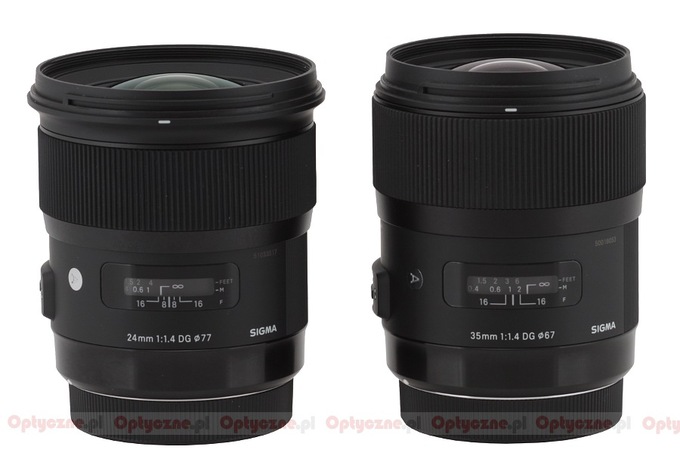 |
The tested lens starts with a metal mount surrounding the contacts and a rear element, 32 mm in diameter. That element is mobile, being situated on the same level as the mount with the focus set at infinity; it hides inside the lens less than1 cm when you pass to the minimum focus. The element is surrounded by a tube which is excellently darkened, matted and ribbed. There are no slits between its rim and the edge of the element. The front element for a change is immobile which means that during the focusing the focal length changes along the optical system.
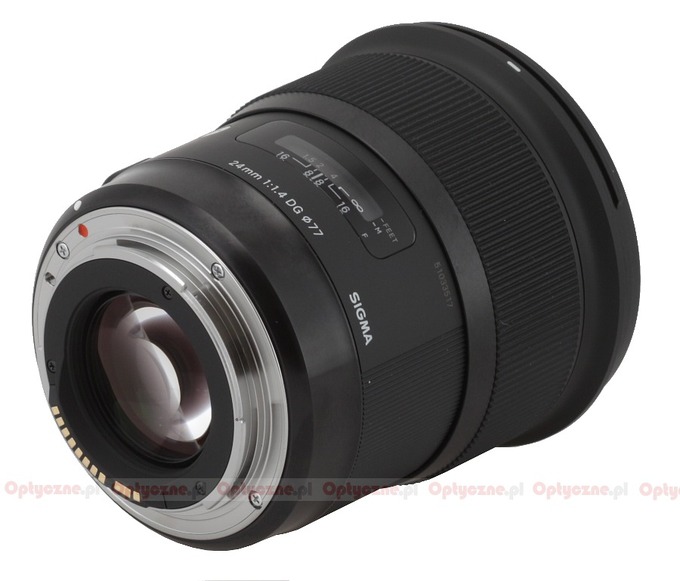 |
The proper casing of the lens starts with a smooth, black, shiny and metal ring on which there is a white dot making the alignment with a camera easier. Further on there is the inscription with the name and the parameters of the lens and above it – a distance scale behind a window, expressed in feet and meters. Below you see a depth of field scale but with markings only at f/8.0 and f/16. On the left side of the scale you see an „A” letter meaning the new lens belongs to the “Art” group, an inscription “MADE IN JAPAN” and a focusing mechanism mode switch (AF/MF).
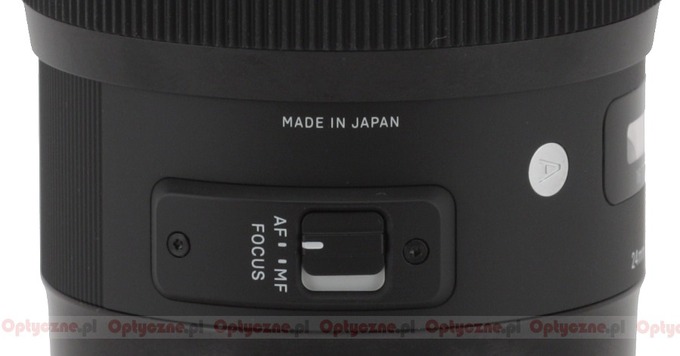 |
The next part is a huge manual focus ring, as wide as 31 mm. Most of it is covered by comfortable, rubber ribs. The ring moves smoothly and is well-damped; it’s a pity that running through the whole scale takes a turn through just 90 degrees. More precise settings would need something close to 120-150 degrees.
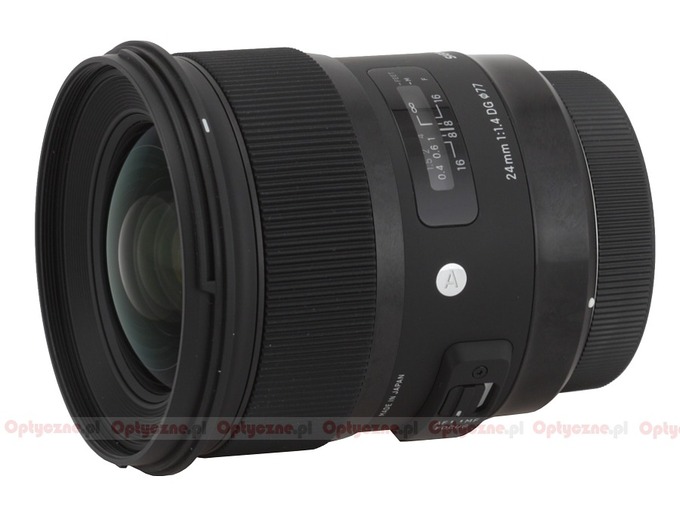 |
Immediately after the manual focus ring you find a hood mount, surrounding a non-rotating filter thread, 77 mm in diameter; the thread for a turn goes round a convex front element, 55 mm in diameter.
The optical construction diagram is really impressive – just look at the picture below.
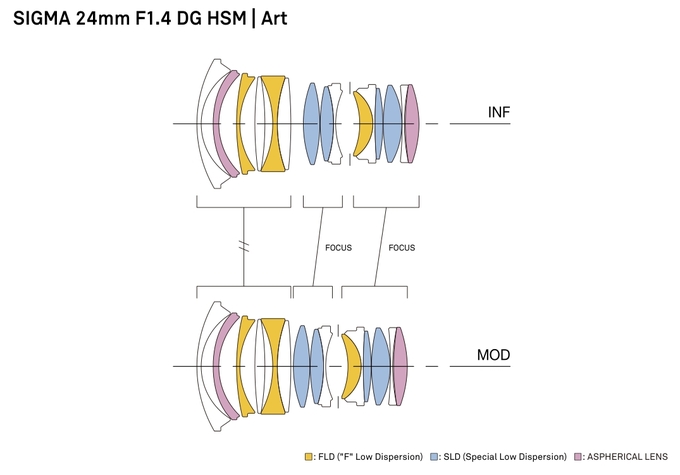 |
You deal here with as many as 15 elements positioned in 11 groups. Once again the number of special elements impresses. Overall you can find as many as three FLD elements, made of low-dispersion glass with the properties similar to those of the expensive fluorite, four classic low-dispersion SLD glass elements and two aspherical ones. Add to that an aperture with nine blades which can be closed down maximally to f/16.
The buyers get both caps, a hard case and a petal-type hood in the box.
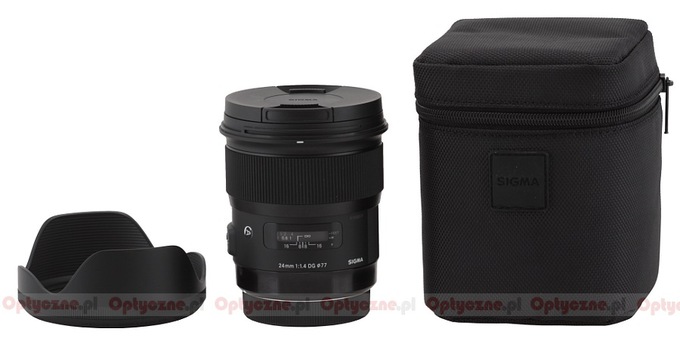 |






